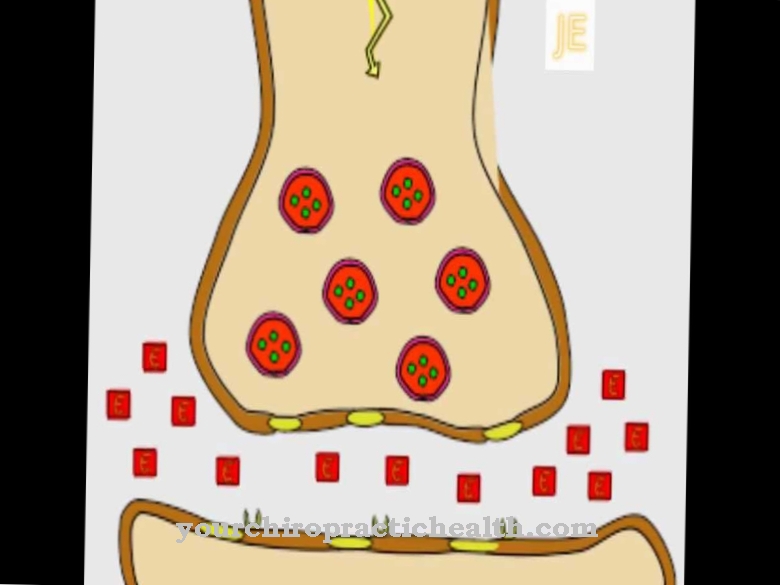The pancreas (medical pancreas) is a gland that belongs to the digestive organs of humans and also of all vertebrates. Lying in the upper abdomen of humans, it is one of the vital organs.
What is the pancreas?

The pancreas is an exocrine gland that releases digestive enzymes to the duodenum.
Only then can food components from ingested food be broken down and the nutrients released into the blood. At the same time, the pancreas is also an endocrine gland that produces hormones, e.g. Forms insulin.
Without the pancreas, the complicated digestive processes would not be possible. The pancreas is of great importance in the formation of insulin and thus in the regulation of blood sugar.
Anatomy & structure
The pancreas lies between the stomach, liver and spleen across the upper abdomen. The peritoneum lies in front of all these abdominal organs. The pancreas is shaped like a wedge, about eight inches long, about three to four inches wide and one to two inches long. It weighs between 70 and 100 grams.
The pancreas is divided into three different areas. The head of the pancreas is on the right side, followed by the body of the pancreas. The gland ends with the tail of the pancreas on the left. The tail of the pancreas ends exactly at the inner bulge of the spleen.
The head of the pancreas is virtually embedded in the duodenum. The surface of the pancreas consists of thousands of lobules. They each have a diameter of around three millimeters.
The pancreas opens into the duodenal arm with an outlet duct. The pancreas enzymes reach the intestine through this passage. A connective tissue capsule surrounds the whole pancreas.
Functions & tasks

In the body and tail of the pancreas are the Langerhans Islands. They produce the vital hormones insulin, glucagon and somatostatin. Insulin and glucagon regulate blood sugar levels in the body.
The exocrine part of the pancreas contains gland cells that produce digestive enzymes called the pancreas. The secretion comes from the glandular lobes through gland ducts to the large outlet duct (ductus panreaticus). Together with the gallbladder duct, the pancreatic duct opens into the duodenum and pancreatic enzymes enter the intestine.
It is these pancreatic enzymes that enable carbohydrates, fats and proteins from food to be absorbed into the blood. Without being broken down by the pancreatic enzymes, these components are far too large to get into the blood.
98 percent of the pancreatic tissue is responsible for exocrine function, i.e. for the production of digestive enzymes.
Only two percent of the pancreatic tissue takes care of the endocrine function, i.e. the production of hormones. But this small part is vital.
The best known pancreatic hormone is insulin. It ensures that carbohydrates can get into the body's cells as fuel by practically serving as a "door opener" for the cells. It is the only hormone in the body that can lower blood sugar levels.
Glucagon is the antagonist of insulin. It increases the blood sugar level when there is a threat of hypoglycaemia (e.g. during exercise). Only a healthy interaction of insulin and glucagon enables a stable blood sugar level.
Diseases
Many people think of diseases as the pancreas diabetes.
Diabetes mellitus is a disease of the endocrine glands of the pancreas. There are several forms of diabetes, the two best-known forms being type 1 diabetes mellitus and type 2 diabetes mellitus.
In type 1 diabetes mellitus, the patient needs insulin. The pancreas no longer produces insulin. It is an autoimmune disease. The immune system is directed against its own body because it no longer recognizes the cells as the body's own. The insulin must be added from the outside using insulin syringes.
Type 1 diabetes mellitus is still incurable, and the cause is not yet fully understood. With suitable insulin and nutritional therapy, however, patients today lead an almost unhindered life.
In type 2 diabetes mellitus, the pancreas still produces insulin, but the body is partially or completely resistant to insulin. So the insulin cannot work, or can work incorrectly. This form of diabetes can often be treated with tablets.
Another disease of the pancreas is pancreatic cancer, which is often fatal because it is usually recognized late.
Typical & common diseases
- Inflammation of the pancreas (pancreatitis)
- Pancreatic cancer (pancreatic cancer)
- Diabetes mellitus













.jpg)

.jpg)
.jpg)











.jpg)